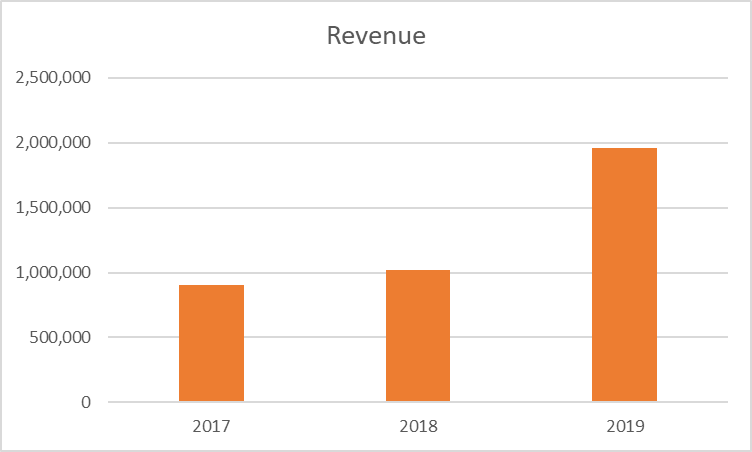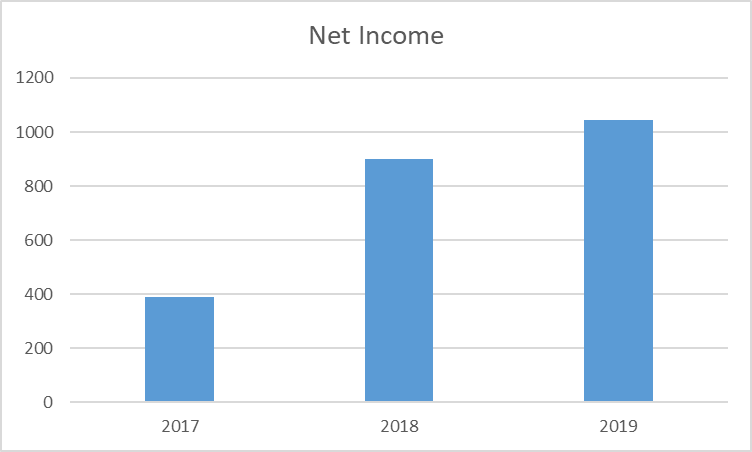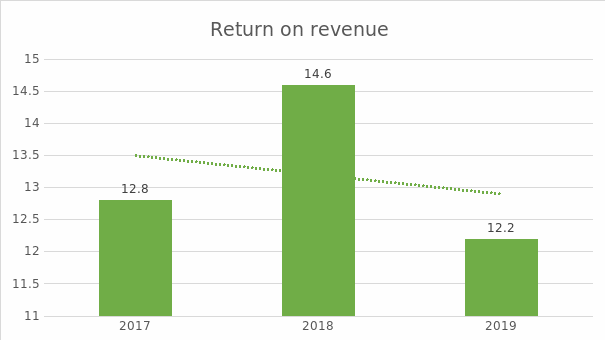Goodstart Company Profile
Mission
Goodstart considers that Australia’s kids must access quality care and early development. The institution’s investment in improved programs and service models intends to make sure that kids facing challenges are assisted in enhancing learning and welfare.
Vision
The institution’s vision assists families around Australia to comprehend and adopt the value of learning. The strategy seeks to combine ancient schooling framework with modern approaches in child development model for career decision making.
Value Proposition
A value proposition describes the impact and importance of a business investment when customers purchase their merchandise. The value proposal provides a statement of intention as it introduces the brand to customers, evaluate its functions and objectives (Rekha, Mishra and Chauhan, 2017; Eggert et al., 2020; Lanning, 2020; Mishra, Ewing and Pitt, 2020; Ranta, Keränen and Aarikka-Stenroos, 2020).
Goodstart aims to equip kids to achieve success, develop abilities for formal education, and offer kinds with the capacity to adapt with an ever-changing globe. Under the positioning objectives, Goodstart plans to provide a premium service for municipal areas via a supportive and nurturing environment that attempts to welcome every single child, irrespective of their history or the challenges. The care centre targets a high social class of working couples, single mothers, and community children as they provide high-quality learning standards, inclusion models, transforming evidence, inclusiveness, and impact. Education enrolment under this proposed plan is based on demand, as the pricing is higher than the traditional childcare service.
The Importance of Premium Child Learning Service
Early child development transcends the child’s growth stages. The process aims at the holistic change of social, psychological, cognitive, and physical demands to construct a comprehensive and robust foundation for lifelong learning and health. Based on this justification, the option to nurture, care, develop, and equip competent and accountable citizens is a mandate for parents and the community. The proposal service provided personal learning curriculum for prospective kids. Under this plan, a new learning model will be advertised to enhance the learning curve. A child’s formative stages are critical to growth, offering a solid base for lifelong learning and studying skills, including collective and cognitive improvement (Kuger, Marcus and Spiess, 2019). The well-established study continues to highlight the value of early childhood education as an essential building block of a child’s success.
Legal Considerations
Constructed on different legal systems and cultural conventions, the UNCRC is a global human rights agreement that summarises a universally agreed set of standards and duties. These fundamental criteria place minimal entitlements and liberty, which needs to be respected by the authorities. They are based on respect for the dignity and value of every person, irrespective of race, colour, sex, language, faith, views, roots, prosperity and birth standing. With these rights comes the responsibility of authorities upholding the concurrent rights of others. These criteria are equally interdependent and progressive.
Based on these legislations, Goodstart complied with relevant statutory and regulatory conditions, including the Disability Law, Child Protection Act, Workplace Health & Safety, Building code of Australia, and the Childhood and Schooling Care Act. Based on these requirements, the management established the educational practice program, children’s wellbeing, and security, physical atmosphere requirements, staffing structures, relationships with kids, and collaborative partnerships with communities and support administration.
In accordance with the Australian child regulatory standards, Goodstart complies with the NQF and care service requirements. The regulations address child safety during the schooling period, enhance the developmental and educational outcomes for kids attending schooling and care solutions, regulate the quality of instructional materials, set a method of domestic integration and shared duty between active shareholders and the community, enhance general expertise, and access to data.
Registration Details
Goodstart is currently Australia’s largest supplier of learning and maintenance programs for infants and young children. The mission is to enhance the lifestyle of Australian’s children and their families, especially the most vulnerable. The objective is to ensure kids have the understanding, growth, and health outcomes. Goodstart is a registered non-profit organisation in Australia. A group of people referred to as founding members established the organisation in 2010.
Type of Insurance
Goodstart early learning care creates customer confidence by maximising the target strategy. Based on this framework, the organisation complied with General Liability Insurance, Employees’ Compensation Insurance, Professional Liability Insurance, and Property Insurance.
Founding Members
Goodstart was established in 2010 by a partnership of four of Australia’s top community business organisations. The founding members include the Benevolent Society, Mission Australia, the Brotherhood of St Laurence, and Social Ventures Australia. The founding members desired to tackle a few essential resources on several social issues and adverse early childhood adventures. Operating as a social venture and a non-profit organisation, Goodstart targets Australia’s kids and vulnerable society.
Board Members
The organisation is committed to best practice and procedures, which will improve its performance and productivity. The governance strategy facilitates responsibility and transparency. Goodstart’s organisational structure guarantees that corporate behaviour is reliable with a vision, mission, goal, and tactical priorities. The Board plans the operations and functioning of the institution. As found in Table 1, the organogram comprises of one direction and eight non-executive members. The Board is devoted to fulfilling those responsibilities professionally and lawfully with confidence, veracity, and independence.
Table 1. Goodstart Organogram.
Intellectual Property
Intellectual property (IP) Australia is a critical element of Australia’s education system. An IP authorises patents for educational materials, instructional curriculum, and school framework. The training materials, most of which are provided by a standardised registered training organisation comprise instruction kits, components of competency and ability sets (Kuger, Marcus and Spiess, 2019). By implication, an IP supplies policy information to the Australian authorities to protect individual modulates in regional and international forums. The instructional materials and model for the premium service would be duly registered under the IP regulation to avoid intellectual theft and piracy.
Location and Outlets
The expansion drive of the organisations has been overwhelming. Goodstart has over 660 childcare centres in Australia because of its strategic objectives in implementing goal-oriented models. The organisation’s learning has been assisting tens of thousands of Australian kids with quality early training programs and working-class couples with family care. However, under this proposal plan, municipal centres would be converted to provide premium service for a higher social class. The outlet locations for the premium service will include Melbourne, Perth, Sydney, Brisbane, Hobart, Darwin, Adelaide, and Canberra, to mention a few.
Sustainability Impact and Pestle Analysis
Political Factors
The organisation is positioned to provide sustainable impact in early learning for the lifelong process. Based on this theory, Goodstart PESTLE analysis highlights the centre’s marketing tools for significant impact (Graham, 2018). Under the political factors, the management in conjunction with the government is focusing on surveys on instructions materials to achieve a sustainable impact (Dockett, 2019; O’Regan, Halpenny and Hayes, 2019). As a result, the government allocated over $653 million to enlarge a national goal on early childhood learning. The government subsidises the program to assist the vulnerable population in acquiring knowledge. Under the Child Care Act, the government targets low and middle-income. The proposed service target parents willing to pay for private learning programs.
Economic Factors
Childcare givers could receive grants and operational loans, which would aid vulnerable communities to acquire subsidised cost for early learning. Based on this assumption, the survey forecast positive economic development and GDP growth. Thus, household discretionary income could reach $942.6 Billion in 2023.
Social Factors
Nowadays, educational centres have shifted to early schooling due to long wring hours for parents. Thus, the demand for afterschool and early school learning is high. By implication, Goodstart will engage the target population with a robust child development model to improve learning with the introduction of a premium service.
Technological Factors
Technology development has not been deployed in child learning. For example, communication gaps exist between parents and children during school hour. However, early learning centres operate in alliance with standard regulatory practice. Therefore, class attendance, results, and admission are conducted via communication links. Goodstart highlights the use of real-time communication tools to observe and monitor children even during working hours. As a result, parents can communicate with their kids from work when the need arises.
Environmental Factors
Every sector operates with specific environmental standards to enhance performance and sustainability impact. Childcare environmental standards align with special needs as it affects learning. As a result, organisations must adopt an eco-friendly environment to deal with climate fluctuations. Climate changes or fluctuations such are heat, rain, cold or wind, and natural earthquakes constitute dangers for learning. Thus, effective management systems within the school premises would encourage investors and parents to invest in the organisation.
Legal Factors
The National Quality Framework provides regulations for effective management. However, legal factors constitute several requirements that could affect learning. The modification of existing laws may create impediments for compliance and challenges of implementation. The legislation or modifications of child protection laws, employment standards, health safety and insurance policies are components of legal variables. These factors contribute to the overall assessment of the PESTEL analysis.
Market
The SWOT analysis highlights the organisation’s strategy for growth. As a leading childcare centre in Australia, the SWOT assessment reveals areas of strength, weakness, opportunity and threat.
Strengths
- Effective learning curve.
- Accessibility across municipal areas in Australia.
- Innovative and strategic child learning models.
- Trained teachers and caregivers.
- Evidence of its sustainability impact on children.
Weaknesses
- Services do not cover the entire population.
- The organisation target one social class.
- Goodstart does not cover vacations that attract long-term holidays.
- Most learning centres are situated in municipal districts and exclude the rural population.
Opportunities
- Provides new solutions and expand services.
- The demand may exceed expectations as the government provides payments for vulnerable populations.
- Create solutions and services to assist parents who pay premium costs.
Threats
- New polices.
- Disease outbreaks.
- Negative opinion of child safety.
- Rampant threats of child molestation.
Strategy Management
Short and Long Term Goals
The business goals would enhance the centre’s position as a leading childcare institution in Australia.
- Execute standard quality practice and learning curriculum.
- Collaborate with education regulators to share and adopt best learning practice.
- Develop effective leadership.
- Encourage positive employee retention rate.
- Expand support schemes for.
- Educate the population on the impact of premium learning programs.
- Utilise advanced technologies to improve learning.
- Maintain good governance and business ethics.
Action Plan to Achieve Success
Identifying Risks
When a threat becomes a fact, a well-prepared team can mitigate or prevent the effect on revenue, the lost productivity and time, and also the adverse effect on clients. Thus, the capability to recognise which risks pose a danger to productive operations is an integral part of strategic business planning (van Rooijen and Newstead, 2017; Dockett, 2019; O’Regan, Halpenny and Hayes, 2019; van Rooijen and Jacobs, 2019). Under many business models, associations confront preventable, tactical, and outside dangers, which may be handled through recognition, modification, or removal (van Rooijen and Newstead, 2017). Therefore, Goodstart is equipped to mitigate physical, location, human, technology and strategic risks.
Risk Prevention
Goodstart understands that the most significant risk insurance policy is avoidance. Preventing negative occurrences is best accomplished through teacher training, background observation, security monitoring, equipment calibration and physical maintenance. Based on this preventive approach, Goodstart employed specialised safety experts and deployed advanced security cameras to provide continuous monitoring of the learning environment. The risk specialist adopts strategies for emergencies such as fire explosion and other unfavourable occurrences.
Finances
Key Performance Indicator
These indicators reveal the performance index of the organisation. Goodstart utilised the net promoter score to evaluate its marketing strategies and business success. Under this framework, the company considered customer engagement programs across Australia. The objective was to encourage differentiated families within the target pool. The management also conducted pilot learning initiatives to improve literacy among communities. The firm’s competitive advantage improved its profits for shareholders and investors. The organisation disinvested and upgraded some centres to provide quality early learning programs.
Revenue Streams
Capital funding will be generated from investors and shareholders. Consequently, the return on revenue will be used to fund operational cost and other expenditures.
Financial Objectives
The acquisition of ABC investments proves that Goodstart has the requirement to grow exponentially. This strategic evidence proves that investors in early child earning would benefit for each dollar spent. The company’s financial statements reveal an expanded growth index for 2017, 2018, and 2019.
Profit and Loss Balance Sheet Predictions
The performance of Goodstart learning centres was motivated by considerable gains in its marketing strategy and quality of service delivery. Table 1 shows the financial statement for three consecutive years. As shown in Figure 3, the return on revenue rose from 12.8 in 2017 to 14.6 in 2018. Consequently, the company’ net income rose from 389 in 2017 to 899 in 2018. As found in figure 4, Goodstart’s revenue moved from 900,678 in 2017 to 1,962,890 in 2019. The expansion in products and services has a direct link on child enrolment. As found in Figure 5, Goodstart products and services encourage greater participation among high-income earners. Based on these estimates, the proposed business plan will increase the company’s net income.
Table 1. Financial Statement (Source: 2019 Annual Report).



Reference List
Dockett, S. (2019). ‘Images of early childhood educators: how are they characterised?’, European Early Childhood Education Research Journal, 27(6), pp. 737–740. Web.
Eggert, A. et al. (2020). ‘Understanding and managing customer value propositions: introduction to the special issue’, Industrial Marketing Management, 87, pp. 242–243. Web.
Graham, D. (2018). ‘PESTEL factors for e-learning revisited: the 4Es of tutoring for value-added learning’, E-Learning and Digital Media, 15(1), pp. 17–35. Web.
Kuger, S., Marcus, J. and Spiess, C. K. (2019). ‘Daycare quality and changes in the home learning environment of children’, Education Economics, 27(3), pp. 265–286. Web.
Lanning, M. J. (2020). ‘Try taking your value proposition seriously – why delivering winning value propositions should be but usually is not the core strategy for B2B (and other businesses)’, Industrial Marketing Management, 87, pp. 306–308. Web.
Mishra, S., Ewing, M. T. and Pitt, L. F. (2020). ‘The effects of an articulated customer value proposition (CVP) on promotional expense, brand investment and firm performance in B2B markets: a text-based analysis’, Industrial Marketing Management, 87, pp. 264–275. Web.
O’Regan, M., Halpenny, A. M. and Hayes, N. (2019) ‘Childminding in Ireland: attitudes towards professionalisation’, European Early Childhood Education Research Journal, 27(6), pp. 757–775. Web.
Ranta, V., Keränen, J. and Aarikka-Stenroos, L. (2020). ‘How B2B suppliers articulate customer value propositions in the circular economy: four innovation-driven value creation logics’, Industrial Marketing Management, 87, pp. 291–305. Web.
Rekha, Mishra, A. and Chauhan, A. K. (2017). ‘Impact of value proposition of digital marketing communication on car buyers’ attitude’, Paradigm, 21(2), pp. 175–191. Web.
van Rooijen, M. and Jacobs, G. (2019). ‘A professionalisation programme towards children’s risk-taking in play in childcare contexts: moral friction on developing attitudes and collegial expectations’, European Early Childhood Education Research Journal, 27(6), pp. 741–756. Web.
van Rooijen, M. and Newstead, S. (2017). ‘Influencing factors on professional attitudes towards risk-taking in children’s play: a narrative review’, Early Child Development and Care, 187(5–6), pp. 946–957. Web.
2019 Annual Report. Putting families and children first. Web.
